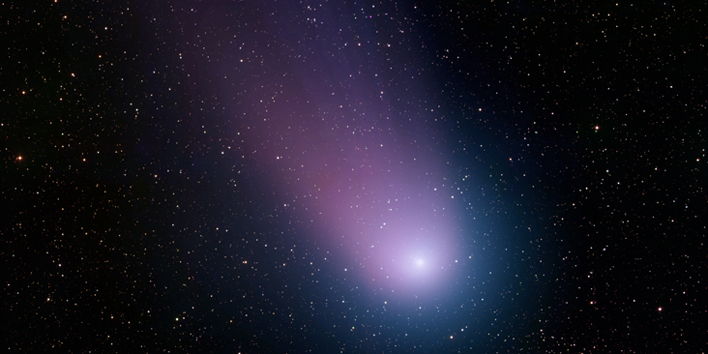Critique of a claimed discovery of a diatom from outer space [UPDATED]
September 21, 2013 by Richard Gordon

Comet C/2001 Q4 (NEAT) (credit: Kitt Peak National Observatory)
A recent paper by Milton Wainwright et al. [1] claimed that sampling of the stratosphere revealed a diatom frustule captured from a height of >25km.
The paper, published in Journal of Cosmology, also argues that the object came from space, with a probable origin in the watery environment of a comet.
There are a number of problems that I would have flagged had I been a reviewer of this paper before it was published:
- Apparently just one broken diatom shell was found, not inspiring statistical confidence.
- There is no discussion of whether the cover prevented lateral motion of air or wind borne particles. (Remember Pasteur’s long, winding tube to keep atmospheric microbes out. A mere “cover” probably won’t do. But who reads Pasteur anymore?)
- No controlled experiment was reported in a dusty environment — say, using diatomaceous earth — to see if particles get past the cover.
- The method of peeling off the protective material on the scanning microscopy stubs was not described, and that was apparently done at ground level. Apparently, neither these nor the air blaster and swabs were tested for particles introduced in their manufacture.
- There are standards for how dust-free various laboratories are. These are not mentioned, so we do not know how dust-free the apparatus was before launching, nor after.
There is also literature on how hurricanes and storms move diatoms through the atmosphere [2]. In addition, supporting an Earth (rather than space) origin, bacteria and other biological materials are common components of cloud condensation nuclei, and there have been several mechanisms suggested for the transfer of particles to the upper atmosphere, as I have noted [3].
The closest-available to “proof” that terrestrial diatoms can reach or exceed 27km altitude is a study [4] by geologists showing that “…the individual diatom valves have diameters and settling velocities of [less than 50 microns and 1 meter per second], respectively, which are similar to the fine volcanic glass shards that were dispersed hundreds to thousands of kilometers downwind. … Powerful, water-rich eruptions are modeled to spread ash at a range of atmospheric heights from ground level to 20–30 km altitude.”
UPDATED Sept. 22, 2013: added evidence from volcanic ash.